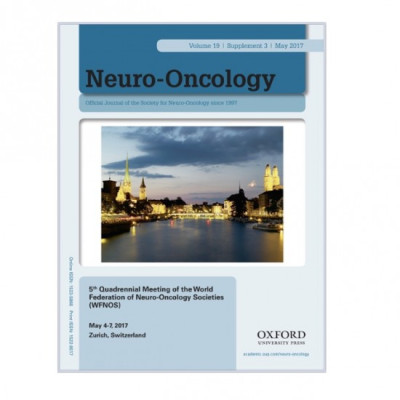Publication
Recommendations for computation of textural measures obtained from 3D brain tumor MRIs: A robustness analysis points out the need for standardization
D. Molina, J. Pérez-Beteta, A. Martínez-González, C. Velásquez, J. Martino, B. Luque, A. Revert, I. Herruzo, E. Arana, V.M. Pérez-García
Neuro-Oncology 19 (3): iii44 (2017)
MOLAB authors
Abstract
Abstract
Introduction: Textural analysis refers to a variety of mathematical methods used to quantify the spatial variations in grey levels within images. In brain tumors, textural features have a great potential as imaging biomarkers having been shown to correlate with survival, tumor grade, tumor type, etc. However, these measures should be reproducible under dynamic range and matrix size changes for their clinical use. Our aim is to study this robustness in brain tumors with 3D magnetic resonance imaging, not previously reported in the literature. Materials and methods: 3D T1-weighted images of 20 patients with glioblastoma (64.80?±?9.12 years-old) obtained from a 3T scanner were analyzed. Tumors were segmented using an in-house semi-automatic 3D procedure. A set of 16 3D textural features of the most common types (co-occurrence and run-length matrices) were selected, providing regional (run-length based measures) and local information (co-ocurrence matrices) on the tumor heterogeneity. Feature robustness was assessed by means of the coefficient of variation (CV) under both dynamic range (16, 32 and 64 gray levels) and/or matrix size (256x256 and 432x432) changes. Results: None of the textural features considered were robust under dynamic range changes. The textural co-occurrence matrix feature Entropy was the only textural feature robust (CV < 10%) under spatial resolution changes. Conclusions: In general, textural measures of three-dimensional brain tumor images are neither robust under dynamic range nor under matrix size changes. Thus, it becomes mandatory to fix standards for image rescaling after acquisition before the textural features are computed if they are to be used as imaging biomarkers. For T1-weighted images a dynamic range of 16 grey levels and a matrix size of 256x256 (and isotropic voxel) is found to provide reliable and comparable results and is feasible with current MRI scanners. The implications of this work go beyond the specific tumor type and MRI sequence studied here and pose the need for standardization in textural feature calculation of oncological images.
FUNDING: James S. Mc. Donnell Foundation (USA) 21st Century Science Initiative in Mathematical and Complex Systems Approaches for Brain Cancer [Collaborative award 220020450 and planning grant 220020420], MINECO/FEDER [MTM2015-71200-R], JCCM [PEII-2014-031-P].















